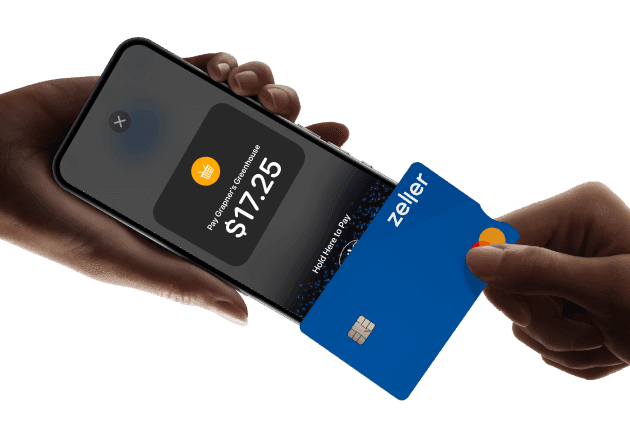
- Business Growth & Optimisation
Should You Charge Call-Out Fees?
It’s common to charge a call-out fee, especially in an emergency.
In Australia, many trade and service providers charge a call-out fee to recoup the cost of time spent assessing a potential job. Others stand by their "no call-out fee" policies, and the incentive it gives clients to consider booking with them. But do call-out fees pay off in the end, or could they do more harm than good?
There are no hard and fast rules about whether to charge a call-out fee. However, if you do choose this common strategy, it's important to understand how it fits into your business operations.
Keep reading to learn about the pros and cons of charging a call-out fee and, if you decide to implement a call-out fee policy, how to make collecting payment as seamless and hassle-free as possible.
What is a call-out fee?
A call-out fee is a fixed fee charged by a service provider or tradesperson for attending a customer’s property to assess (and potentially fix) a problem. The amount charged may vary, depending on the urgency of the problem, time of day, or if the call-out occurs outside of usual work hours. A call-out fee is generally independent of the usual materials and labour fees.
What is covered by a call-out fee can differ from business to business, but generally it will compensate a merchant for some, or all, of the following:
time taken to travel to and from the client’s property
time spent investigating and diagnosing the problem
time spent preparing a quote, including researching the cost of materials and labour
personal time sacrificed to attend an emergency outside of normal work hours.
Is it common to charge a call-out fee?
There are a range of reasons why a trade services business might charge a call-out fee, and it isn’t an uncommon practice. In Australia, there are no laws or regulations relating to the implementation of a call-out fee. For that reason, practices vary across industries and locations.
You might consider introducing a call-out fee for any number of reasons.
You’re regularly called out for emergency or out-of-hours work.
Your customer-base covers a large geographic area, so extensive travel is regularly required.
Your line of work requires a high level of expertise and experience to assess the requirements of the job, before any work can be done.
Preparing a quote involves a significant outlay of time and research.
Choosing to charge a call-out fee is a personal decision, based on the nature of your business. That said, if you do decide to introduce a call-out fee, this should be communicated clearly to avoid confusion.
The difference between a call-out fee and a minimum charge.
An alternative strategy to charging a call-out fee is to set a minimum fee for a job. Rather than charge a separate fee, you would charge a minimum hourly fee to cover your time — irrespective of the time spent on the job. This approach can be effective for small jobs, which may not be otherwise profitable.
The advantage of a call-out fee is that you can collect payment for your time, even if the job doesn’t go ahead. This is particularly appealing for tradespeople who may be participating in a competitive quoting process, where there is no guarantee of getting hired.
The advantages of charging a call-out fee.
1. Avoids time-wasters
Charging a call-out fee is one way to ensure that you are compensated for the time and effort involved in inspecting and quoting for a job — irrespective of whether the project goes ahead. Some tradespeople may choose to waive the call-out fee if the client proceeds with the work, but if the customer decides against hiring you for the job, at least you will have received compensation for your efforts.
2. Provides transparency
As surprising as it sounds, being upfront about your call-out fee can say a lot about your approach to business. Customers appreciate certainty, and by providing clarity around your call-out fee you’re ensuring they won’t be taken aback when the time comes to pay.
3. De-risks your finances
Charging a call-out fee is a great way to ensure that your business stays profitable by placing a value on the time it takes to assess a job. This can be especially important if you work in a competitive landscape, where customers may seek quotes from multiple businesses and there is no guarantee of winning the job.
That said, be aware that unreasonable fees may work against you. The aim is to strike the right balance between compensation and competitiveness.
Disadvantages of charging a call-out fee.
1. Some customers may dislike it
Customers may be put off by the fact that you charge a call-out fee — especially if it isn’t an emergency or out-of-hours request. Some customers may be reluctant, and skeptical of paying for a visit.
Any negativity can be mitigated by providing clarity about your charges, and what the fee is for. You might also consider waiving the fee on a case by case basis, as an incentive for the customer to hire you.
2. Your competitors may not charge a call-out fee
It can be hard to compete with businesses that offer free call-outs, but that doesn’t mean you shouldn’t stick to your guns. Be very clear about the value you bring — including time and expertise — to the customer during your initial visit, and use it as an opportunity to show them that they have paid for an excellent customer service experience.
Best practices for implementing a call-out fee policy.
Once you’ve decided that introducing a call-out fee is right for your business, there are some things you can do to ensure that the process runs smoothly.
Be upfront about your call-out fee
Failing to advise of a call-out fee in advance is an easy way to lose a potential customer — as well as any future customers they might have referred your way. Be clear about your fee and include these details on your website and other touch points. Where possible, also communicate your fee in writing.
By being upfront, you can manage the customer’s expectations, and turn a call-out into a high-value customer experience.
Be consistent
If you’ve made the decision to charge a call-out fee, be prepared to explain the reasons why. Don’t confuse customers by waiving your fee at the first sign of an objection. This might seem like a good idea at the time, but it can compromise consumer trust in the long run.
Set a clear policy around what the call-out fee involves, and under what circumstances you will waive it. For example, if you are prepared to waive the fee if someone hires you for a job, let it be known that that is your policy.
Accept payment on the spot
If you need to go back to the office to type up and then send an invoice, you may never recoup your call-out fees. Even if a customer does follow through and pay the invoice, chances are it will be late. The average wait time for invoice payment is 25.5 days.
Instead, consider collecting payment on the day. It’s unlikely your customers will have the right amount of cash on them, so being able to take card payments is essential. With Tap to Pay with Zeller App you can accept card payments right from your smartphone (iPhone or Android). This fast, seamless payment method may also help to smooth over any objections by making payment simple and hassle-free for the customer.
Call-out fees are not an uncommon practice. The key is to understand the reasons why you need to charge a call-out fee, and communicate your fees to potential customers with clarity and confidence. Combined with exemplary customer service and an easy way to accept payment from customers, introducing a call-out fee can be a winning strategy to help keep more money in your business.
Not yet using Zeller? With no need to visit a bank and no lock-in contracts, creating a business transaction account is quick and pain-free. From mobile payments to cards to online invoicing and more, Zeller has you covered with everything you need to run a successful business on the go.



